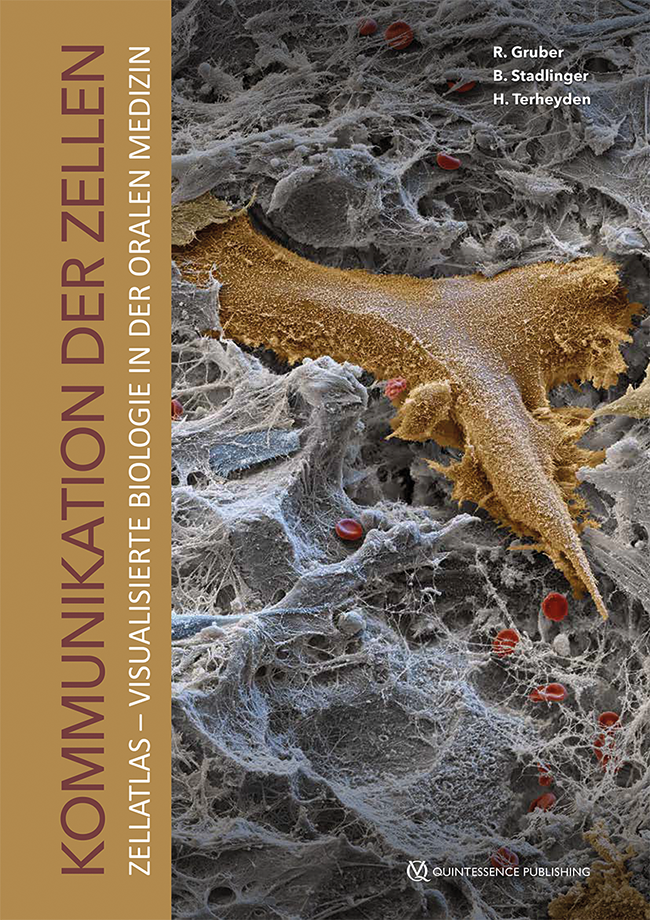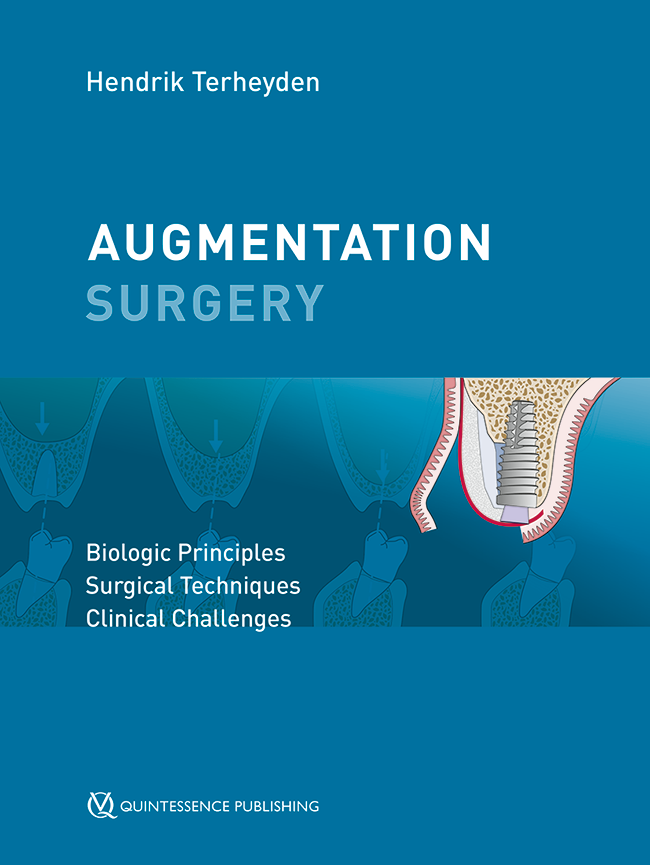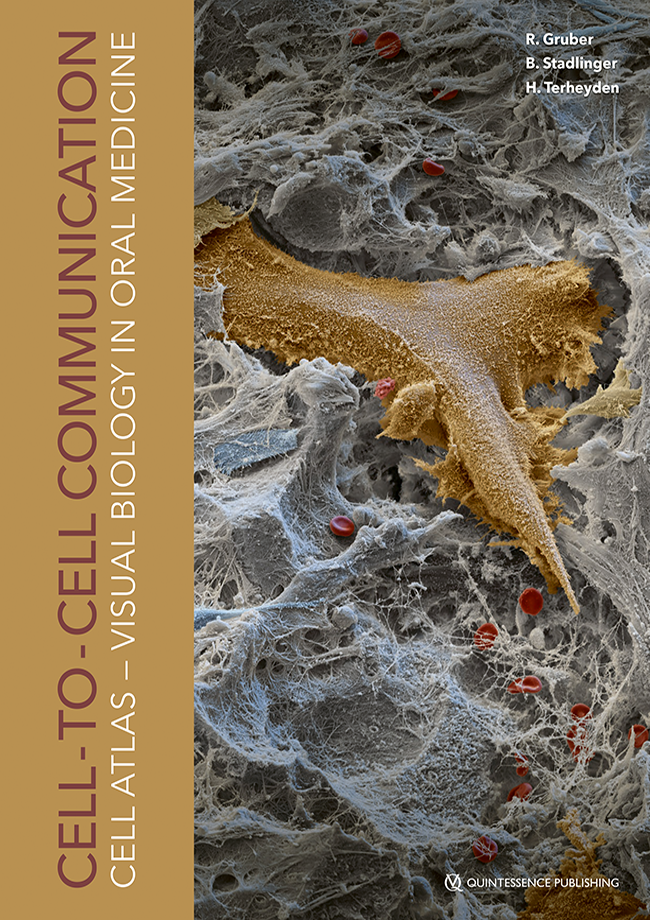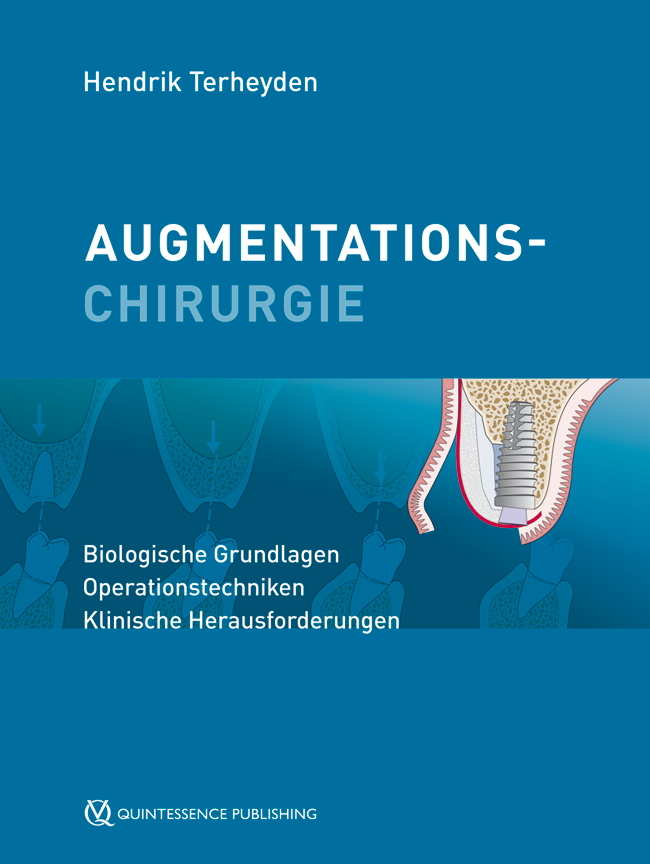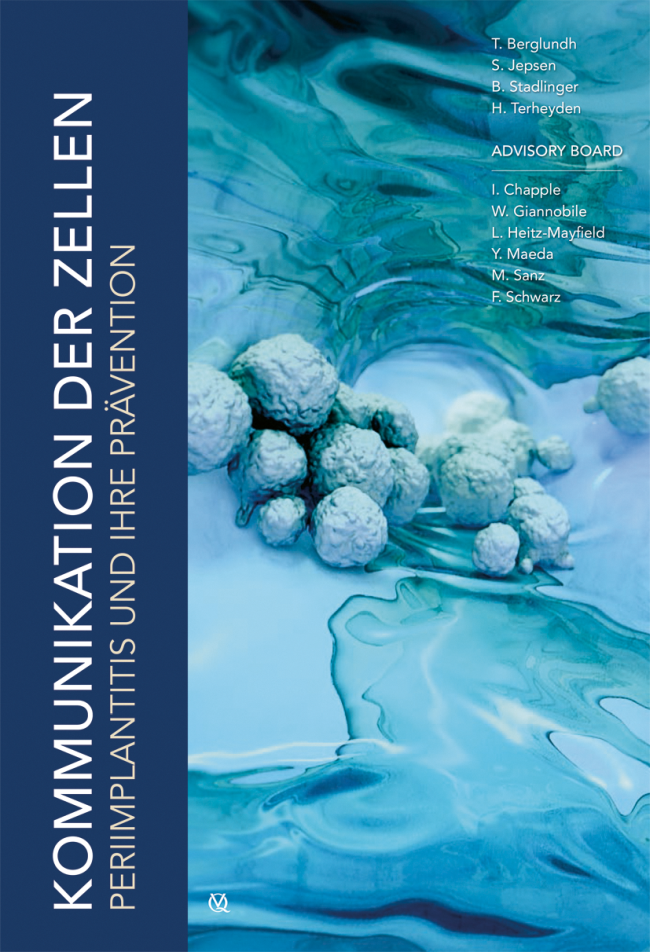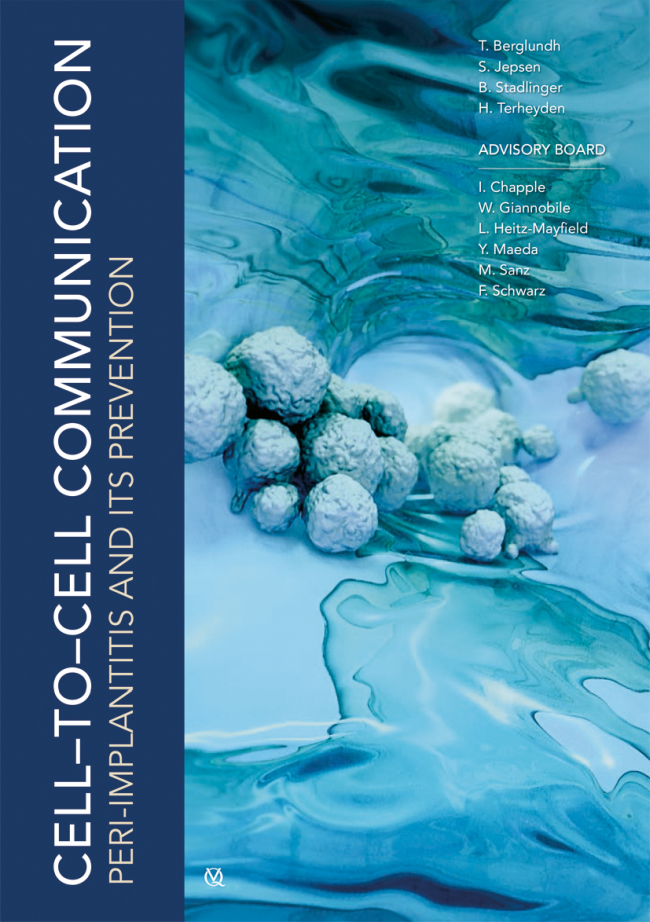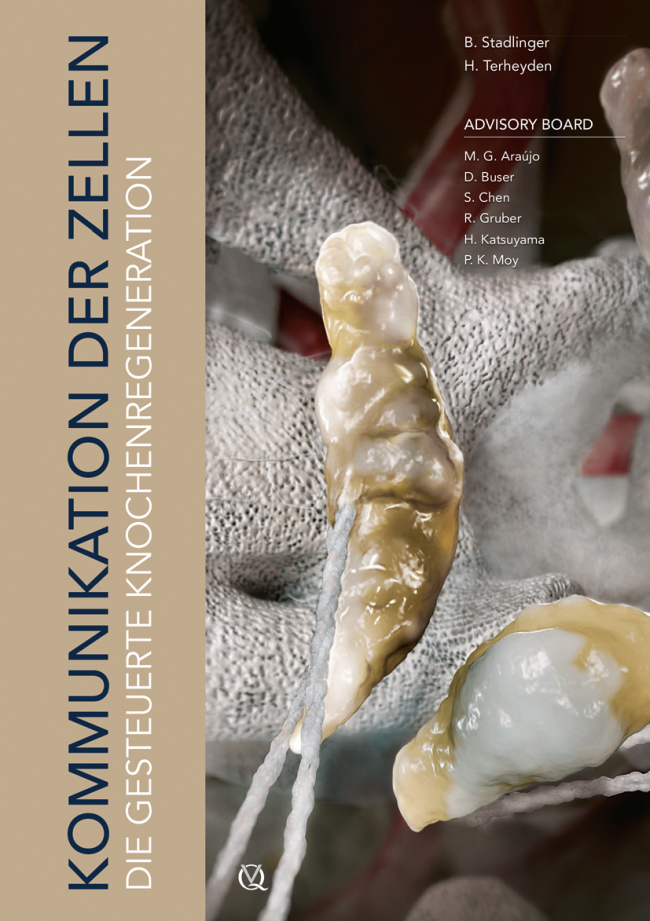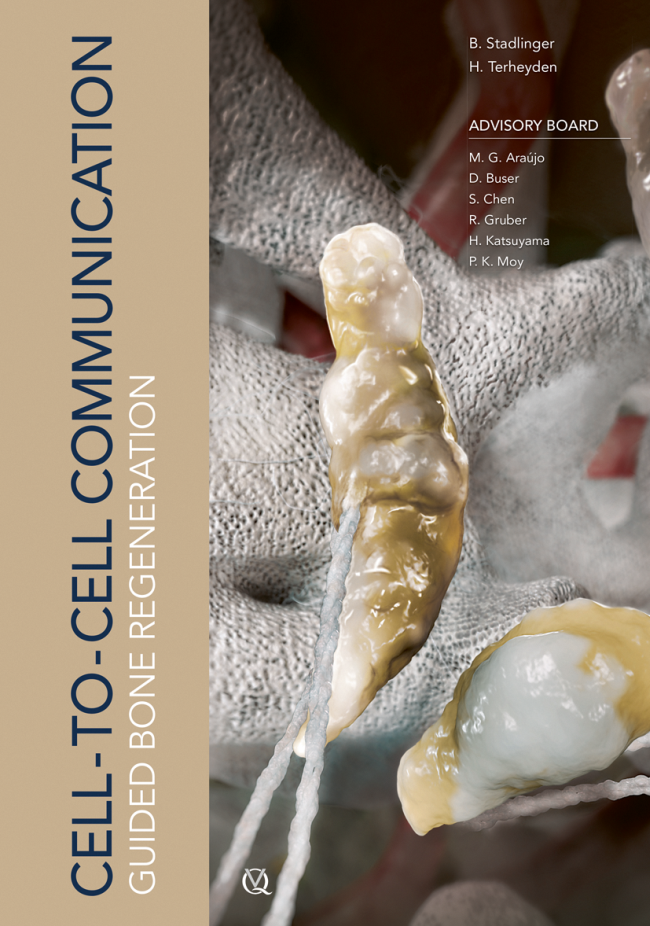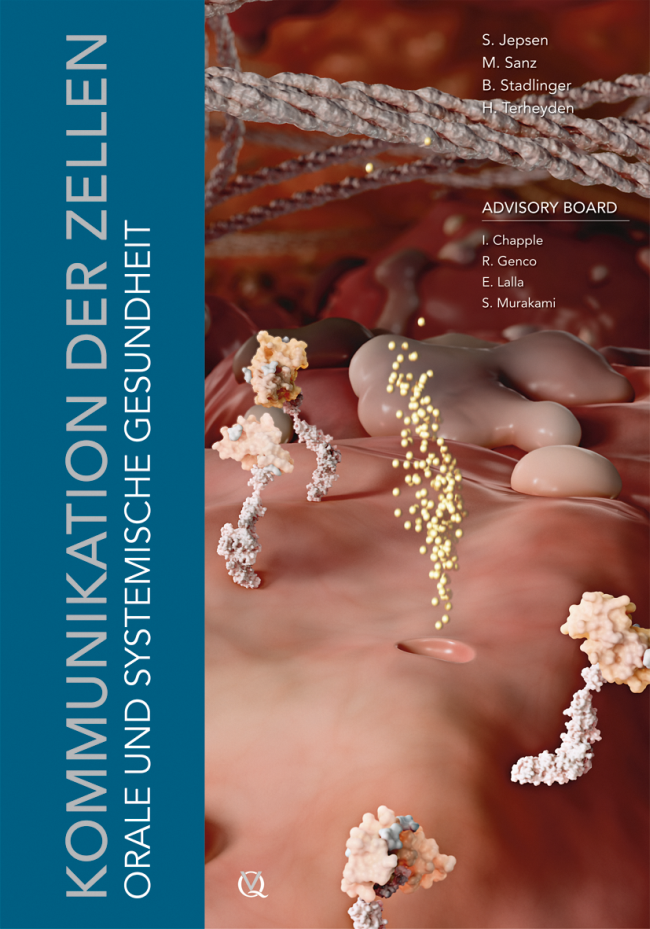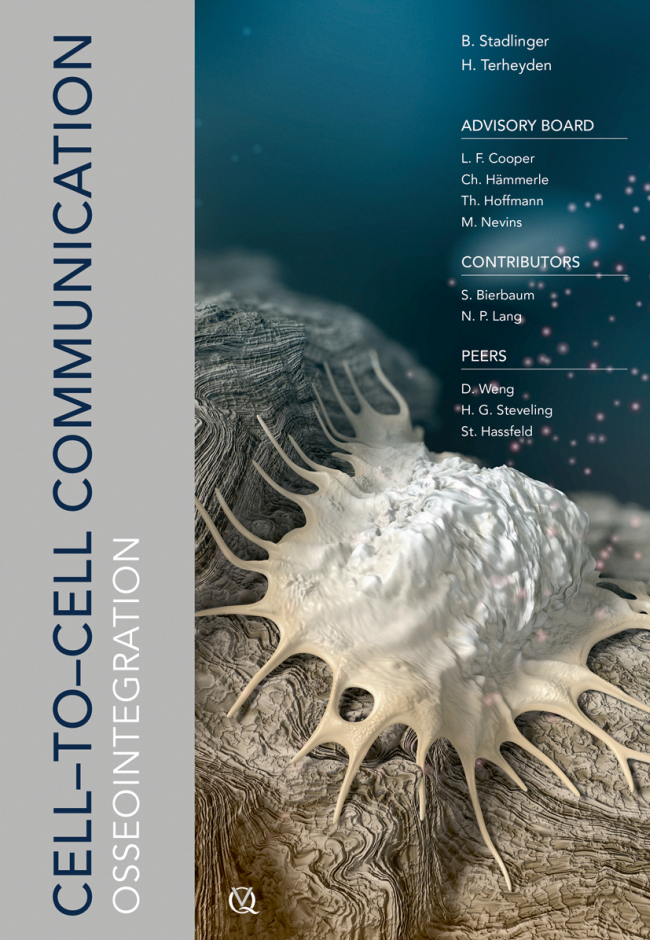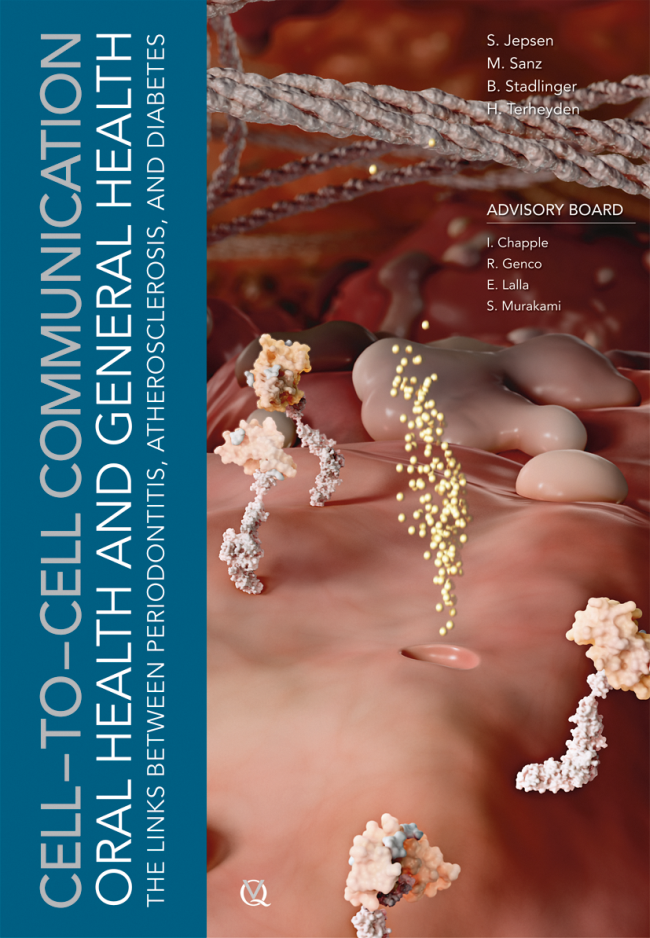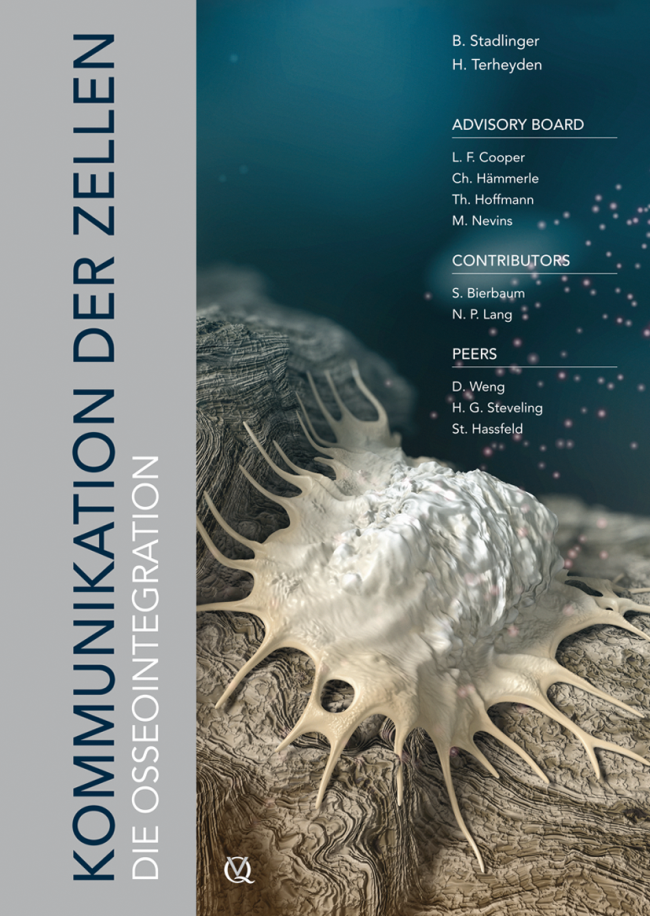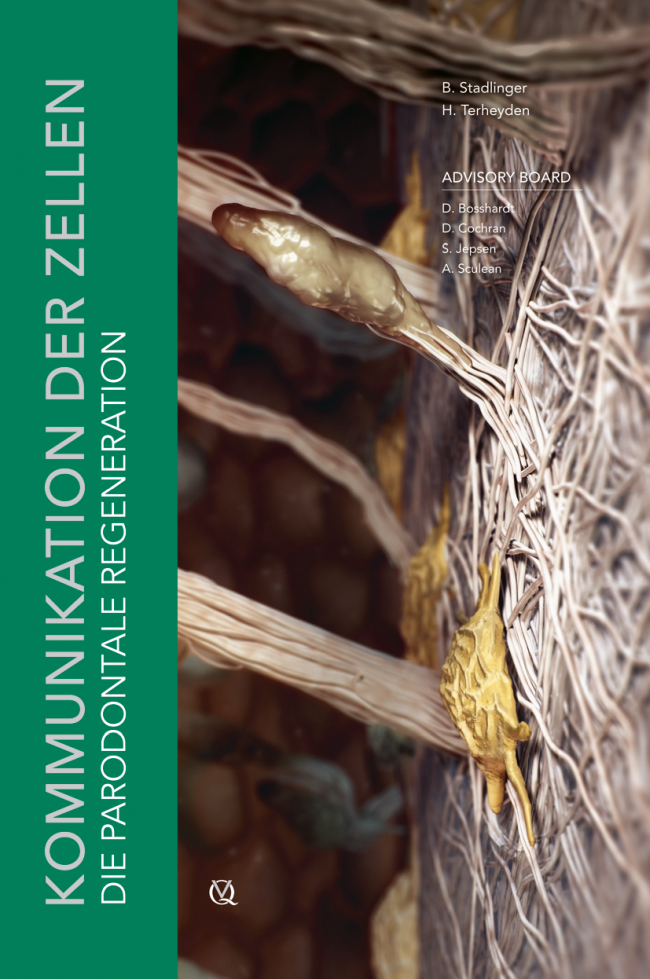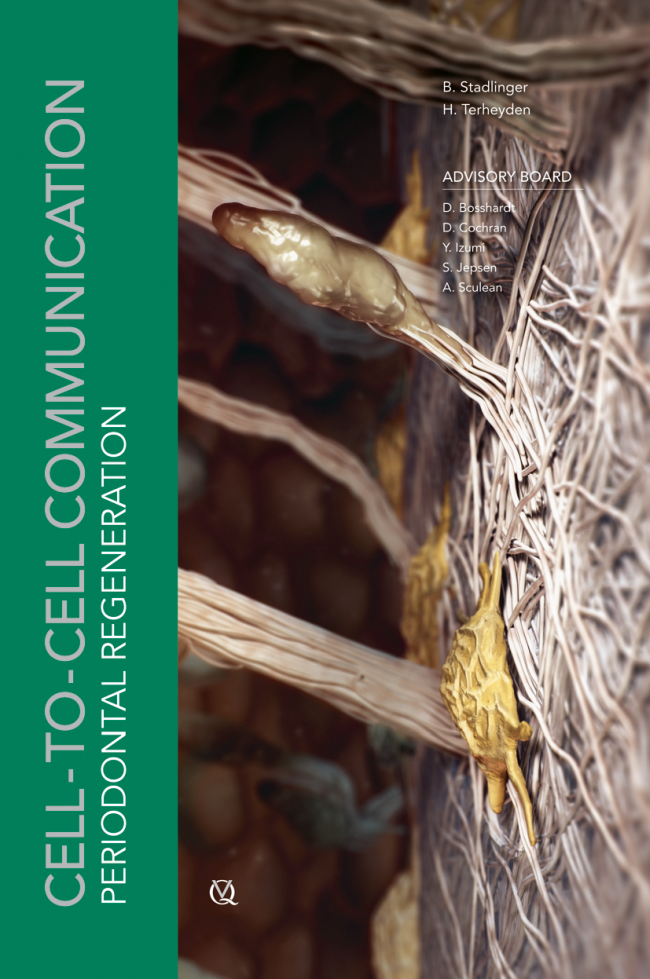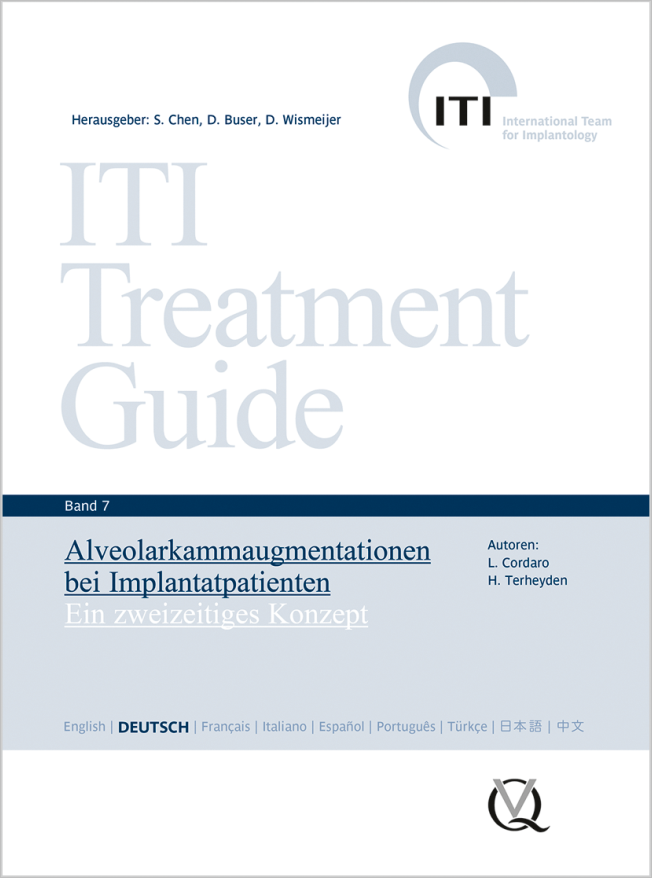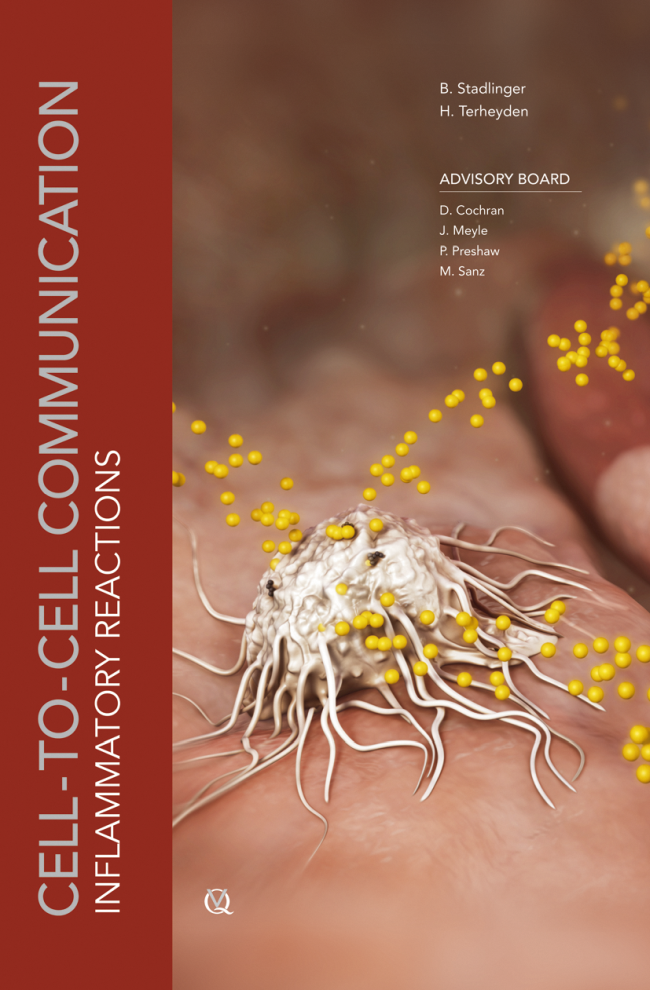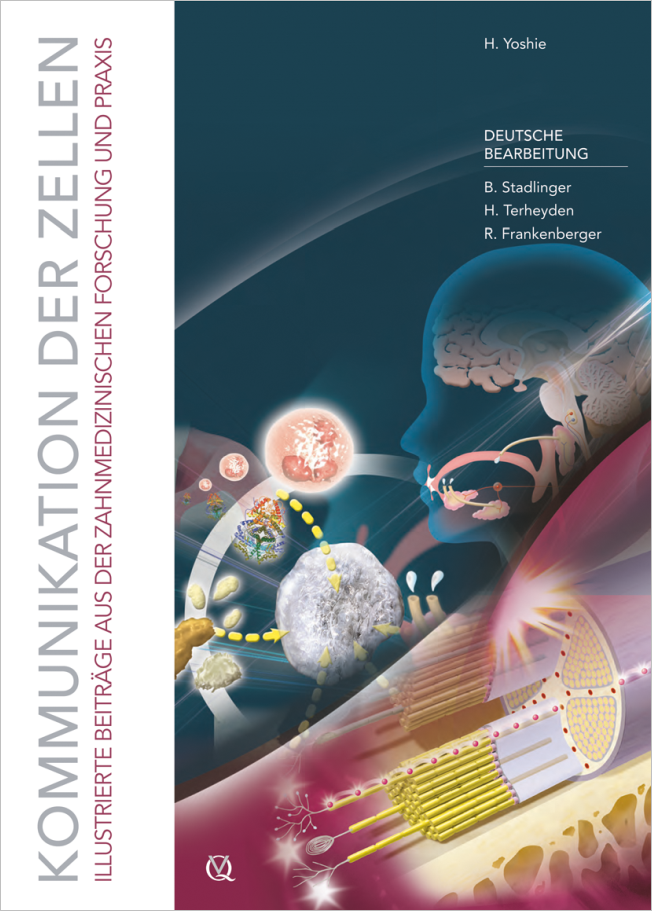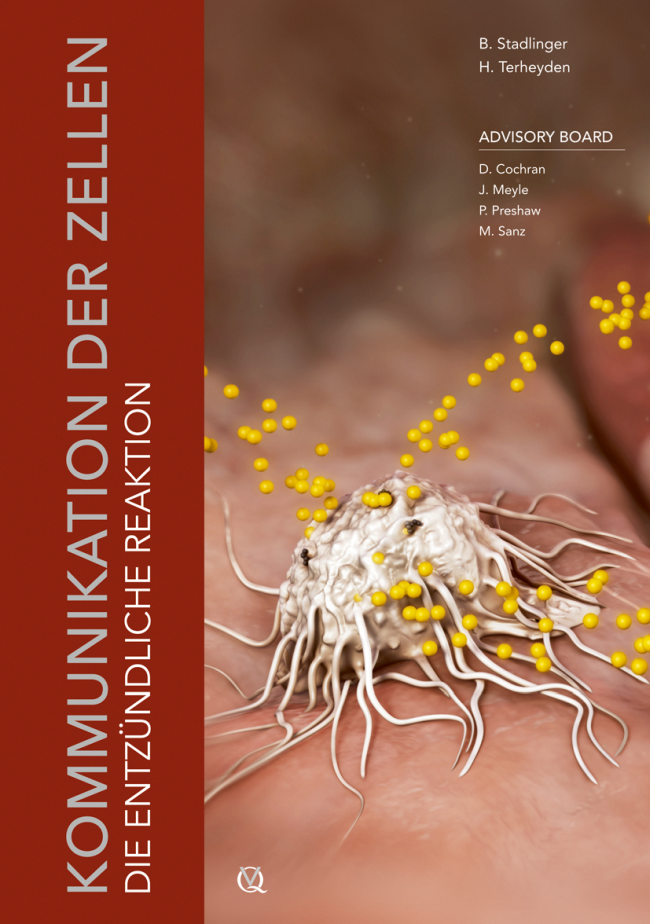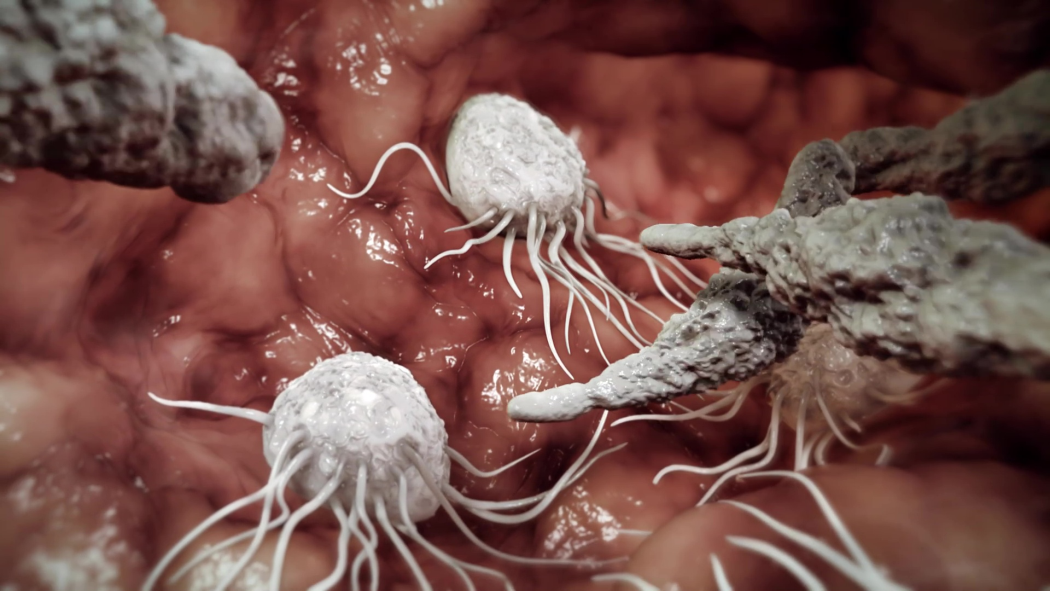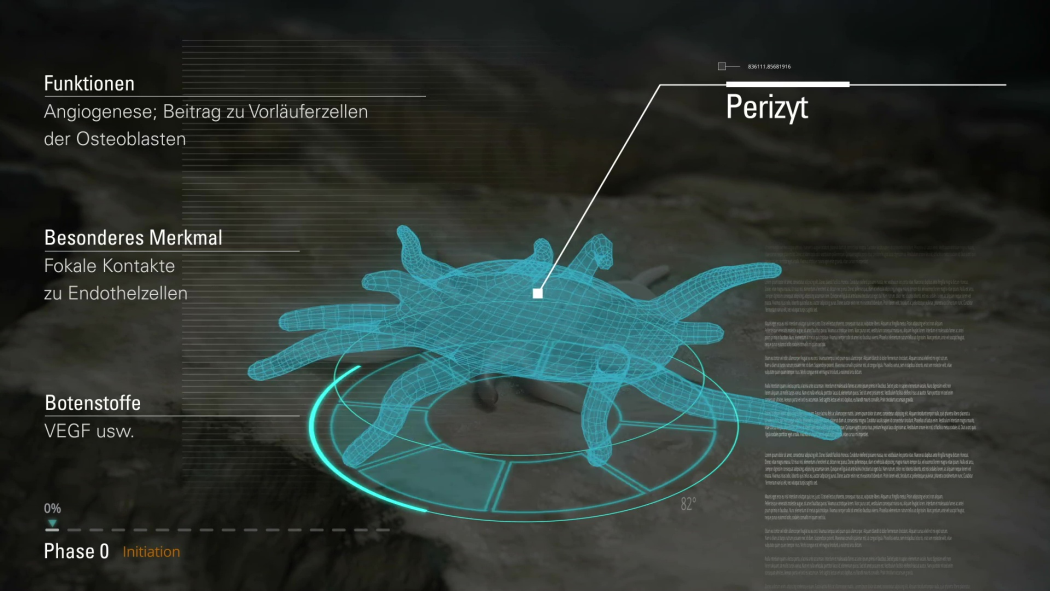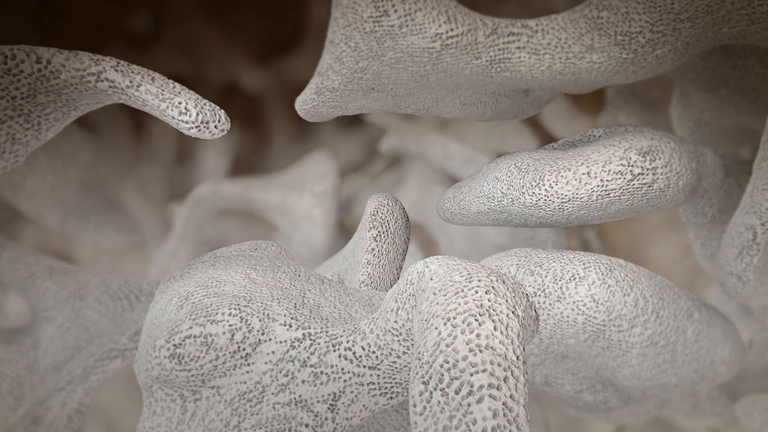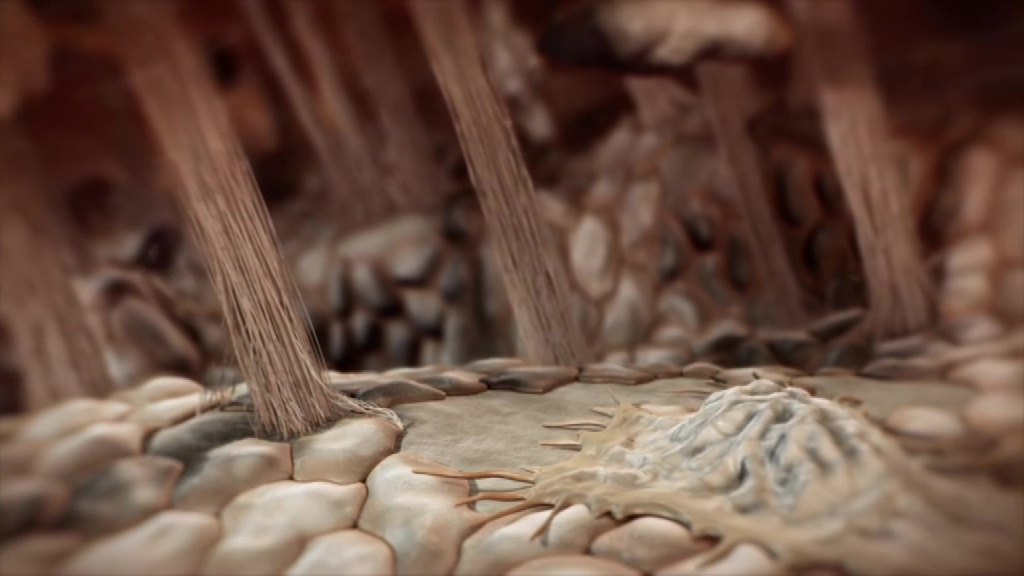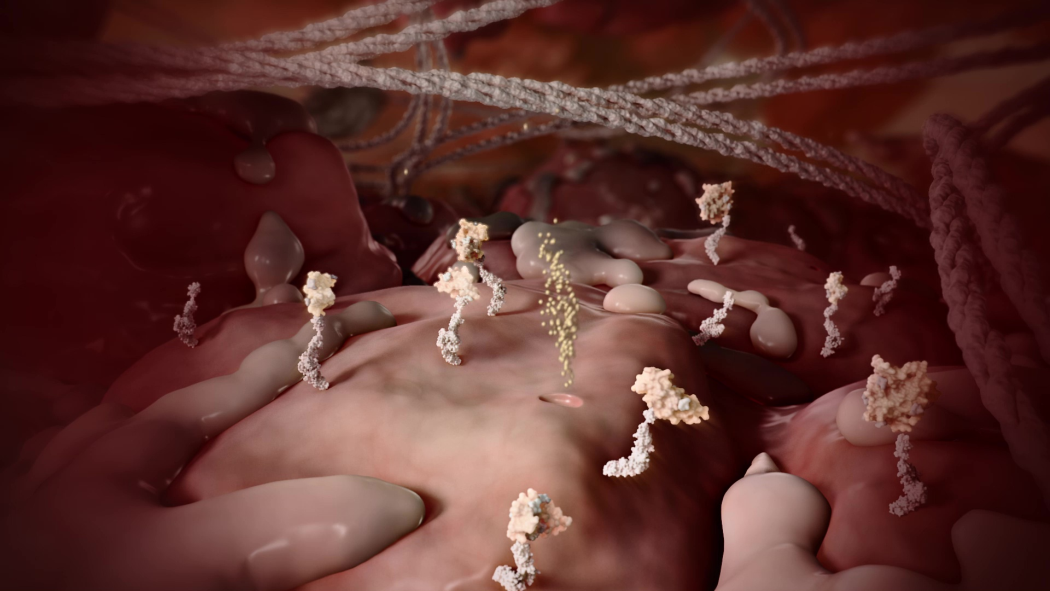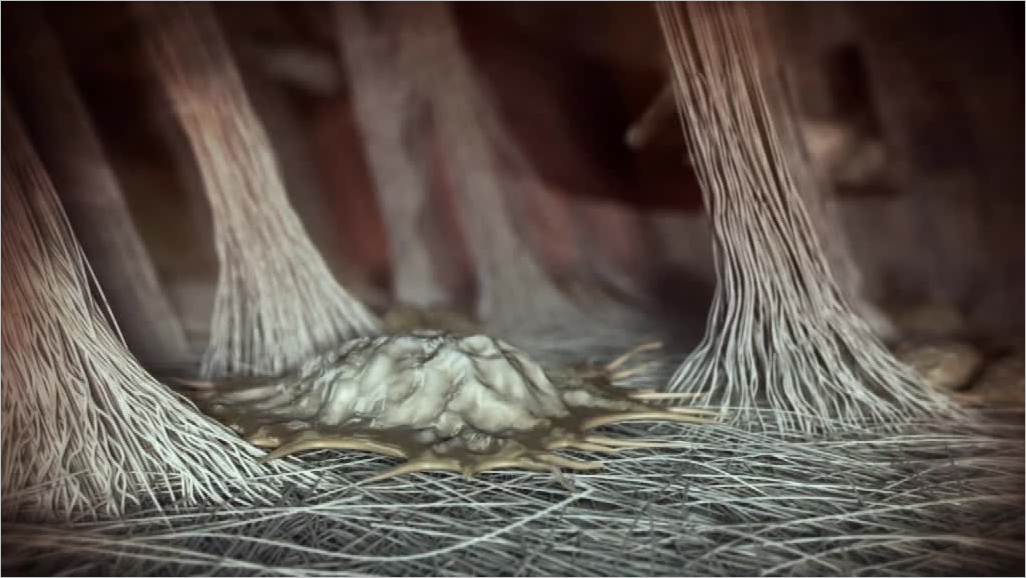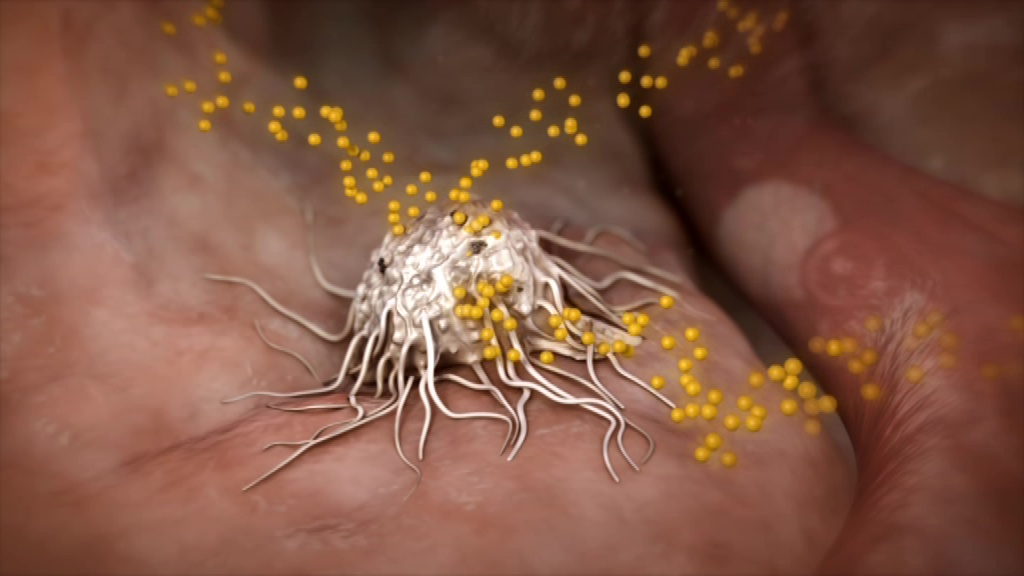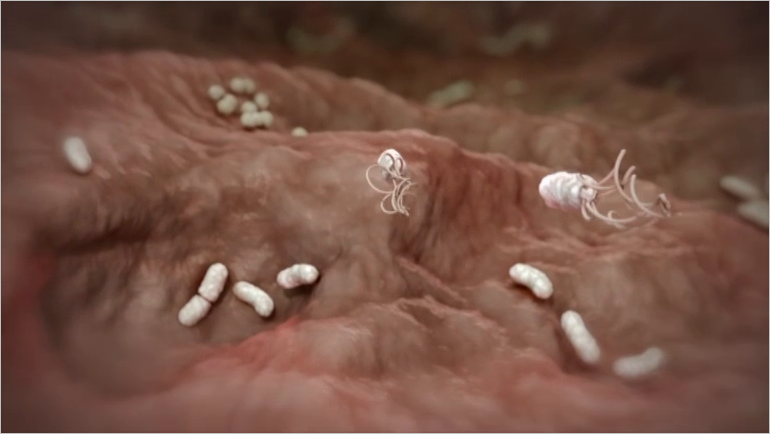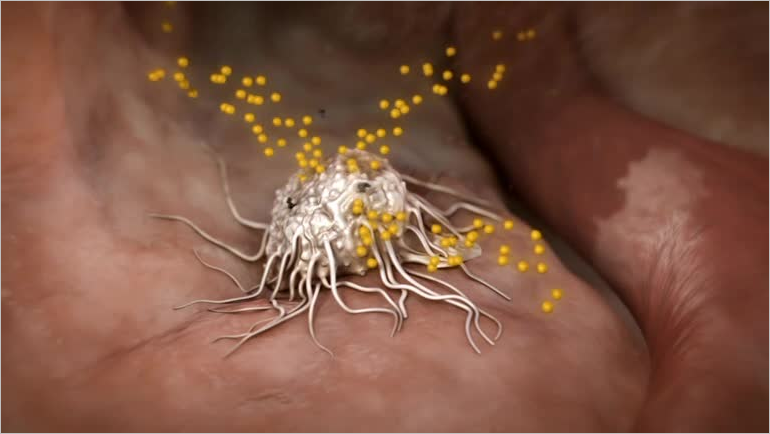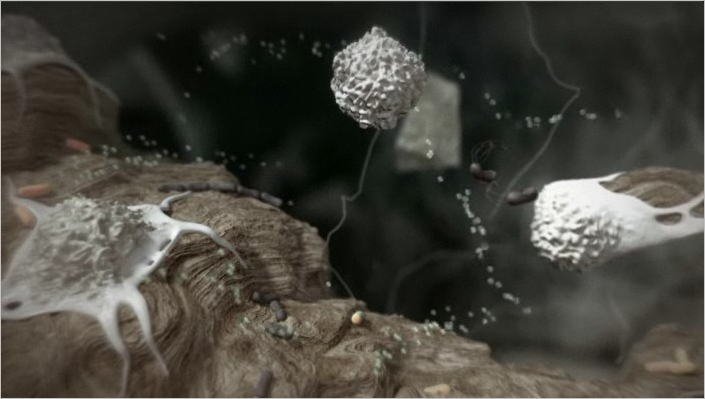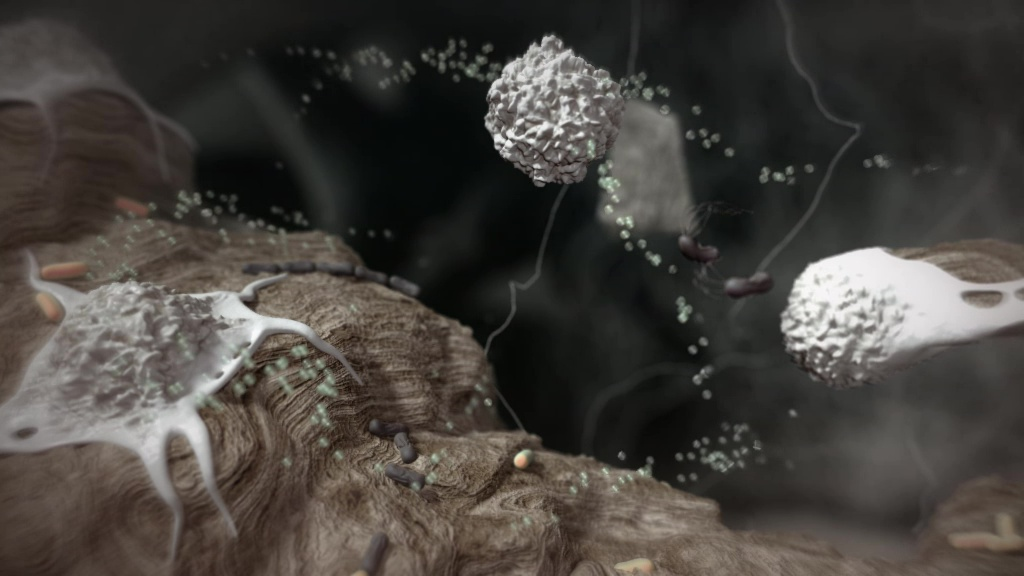Deutsche Zahnärztliche Zeitschrift, 1/2023
NachrufPages 59-62, Language: GermanTerheyden, Hendrik / Wiltfang, JörgDeutsche Zahnärztliche Zeitschrift, 3/2021
GesellschaftPages 190, Language: GermanTerheyden, Hendrik / Wolff, Klaus Dietrich / Raguse, Dirk / Kramer, Franz-JosefGemeinsamer Nachruf ehemaliger Kollegen und SchülerGemeinsamer Nachruf ehemaliger Kollegen und Schüler
Kompetenz, Empathie und nie en¬dender Forschungsdrang – diese Attribute kennzeichneten ein beeindruckendes und erfolgreiches Leben für die Zahn-, Mund- und Kieferheilkunde in Deutschland und weit darüber hinaus: Am 24. Februar 2021 ist unser verehrter Lehrer, Kollege und Freund Prof. Dr. med. Dr. med. dent. Bodo Hoffmeister nach kurzer Krankheit mit 72 Jahren leider viel zu früh von uns gegangen.
Quintessenz Zahnmedizin, 12/2020
Zahnmedizin allgemeinPages 1430-1435, Language: GermanTerheyden, Hendrik / Stadlinger, Bernd / Gruber, ReinhardOsteoklasten wurden lange für mesenchymale Knochenzellen gehalten. Aber neue Kenntnisse aus der Entwicklungsbiologie hinsichtlich der molekularen Steuerung der Zelldifferenzierung und der Immunmodulation des Knochenabbaus weisen die Osteoklasten klar als Mitglieder des Immunsystems aus. Osteoklasten sind für viele zahnärztliche Therapien wie die geordnete Zahneruption und kiefer-orthopädische Zahnbewegung, den Umbau eines Knochentransplantates oder die Osseointegration eines Zahnimplantates unerlässlich. Die Bedeutung der Osteoklasten bei der oralen Immunabwehr wird insbesondere bei Dysfunktionen der Osteoklasten deutlich, so beispielsweise bei der medikamenten-assoziierten Kiefernekrose. Die Immunmodulation der Osteoklastogenese kann zu foudroyanten Verläufen bis hin zur eitrigen Entzündung führen, wofür die entzündliche Wurzelresorption und die Periimplantitis klinische Beispiele sind. Die Aufgabe des Zahnarztes in diesen Situationen ist die Minderung der Osteoklastogenese durch Reduktion der mikrobiellen Antigenbelastung durch endodontische Behandlung bzw. Kontrolle des Biofilmes. Die marginale Parodontitis kann der Osteoimmunologie als Modell zur Erforschung der entzündlichen Knochenresorptionen dienen. Hiervon profitieren im Gegenzug auch andere Fachbereiche wie z. B. die Rheumatologie.
Keywords: Osteoklasten, Zelldifferenzierung, Osteoimmunologie, Wurzelresorption, Kiefernekrose, Zytokine
2019-1
Pages 64-69, Language: EnglishStadlinger, Bernd / Jepsen, Søren / Terheyden, Hendrik / Heitz-Mayfield, Lisa J. A. / Berglundh, TordThis complementary article was prepared by Bernd Stadlinger, Søren Jepsen and Hendrik Terheyden and presents an overview of the content of the 6th volume of the "Cell-to-Cell Communication" series. The 6th volume of the series entitled "Peri-implantitis and its prevention" was prepared by a collaborative team of authors - Tord Berglundh, Søren Jepsen, Bernd Stadlinger, Hendrik Terheyden - and an advisory board. This computer-animated scientific film was launched at the EuroPerio meeting in Amsterdam in June 2018, providing a novel way to visualize the complex processes of peri-implant inflammation. It visualizes the biological background of the development and progression of peri-implantitis and highlights the importance of the microbiome and host immune defense. In addition, a perspective article has recently been published in the leading implant journal Clinical Oral Implants Research (Berglundh et. al. 2019). It is hoped that this complementary article will bring the film to the attention of the many ITI Fellows and Members who enjoy reading Forum Implantologicum. Please look for the Q reader at the end of the article and enjoy this captivating film.
Implantologie, 2/2018
Pages 115-122, Language: GermanTerheyden, HendrikIndikation und ZeitpunktAnhand der beiden Parameter Infraokklusion und Implantatüberleben aus Literaturdaten werden in der vorliegenden Arbeit Empfehlungen zur Indikation und zum Zeitpunkt von Zahnimplantaten bei Kindern und Jugendlichen erarbeitet. Bei einer Implantation bei Kindern unter 12 Jahren ist im Schnitt mit ca. 14 bis 17 mm Infraokklusion (Maximum: 20-24 mm) und einem Implantatüberleben von 72 % zu rechnen. Bei Adoleszenten (12-18 Jahre) beträgt die Infraokklusion etwa 3 mm (Maximum: 8 mm) und die Implantatprognose 93 %. Bei jungen Erwachsenen (18-31 Jahre) wurde eine Infraokklusion anhand von Wachstumsstudien von 1,7 mm (Maximum: 6 mm) beobachtet bei einer Implantatprognose von 97,4 %. In Studien zur Frontzahnversorgung liegt die Implantatprognose für ältere Erwachsene eher noch höher, aber auch hier kann es zu Infraokklusionen von im Schnitt 0,3 mm und im Einzelfall über 1 mm kommen. Daher werden Implantate nicht zum Einzelzahnersatz in der Zahnreihe bei Kindern empfohlen, hier kommt eine Implantatversorgung eher bei schweren Hypodontien oder Anodontien infrage. Bei Adoleszenten sollte die tradierte harte Grenze des 18. Lebensjahrs eher einer differenzierten Bewertung weichen und ersetzt werden durch das Abwarten des pubertären Wachstumsspurts. Die sicher auftretende Infraokklusion sollte aber therapeutisch antizipiert und wie die etwas reduzierte Implantatprognose den Patienten und Eltern mitgeteilt werden. Auch nach dem 18. Lebensjahr kommt es zu Infraokklusionen, worüber der Patient aufgeklärt werden sollten.
Keywords: Infraokklusion, Kinder, Adoleszenten, Implantatüberleben, Ankylose, Wachstum, Kieferentwicklung
Deutsche Zahnärztliche Zeitschrift, 2/2016
BuchneuvorstellungenDOI: 10.3238/dzz.2016.0124Language: GermanSanz, Mariano / Stadlinger, Bernd / Terheyden, Hendrik / Herring, Susan W.Quintessenz, Berlin 2016, DVD, ISBN 978-3-86867-301-2, 98,00 Euro
Keywords: Aphthen, aphthöse Läsionen, Morbus Behçet, orale Ulzerationen, genitale Ulzerationen, Therapie
Implantologie, 2/2014
Pages 119-120, Language: GermanTerheyden, HendrikInternational Poster Journal of Dentistry and Oral Medicine, 5/2013
SupplementPoster 679, Language: EnglishMöller, Björn / Acil, Yahya / Gierloff, Christine / Terheyden, Hendrik / Wiltfang, JörgObjectives: Reconstruction of bony defects can be done by free flaps. Donor site morbidity and misfit of the shape are limiting factors. The concept of using the patient as bioreactor solved many problems. The aim of the study was to evaluate if the great omentum is a capable anatomical site for prefabrication.
Methods: In each of 30 adult male New Zealand white rabbits (4.0kg) 2 blocks of biomaterial were implanted in the great omentum with a central vascular pedicle in a cavity of the scaffold. The following five groups were created according to the biomaterial: (1) Bio-Oss® Block, (2) Bio-Oss® Block + rhBMP-2, (3) Bio-Oss® Block + rhBMP-2 + VEGF-165 (4) Bio-Oss® Block + autologous bone, (5) Bio-Oss® Block + autologous bone + rhBMP-2. CT examinations were performed after the implantation and 2, 4, 6 and 10 weeks later to define the bone density. The animals were sacrificed at 10 weeks postsurgery after intraperitoneal injection of fluorochromes and the specimens were collected for histological, immunohistochemical and histomorphometric analysis.
Results: First analyses could show that the great omentum has advantage among other sites previously described with a long vascular pedicle, less postoperative functional impairment and more flexibility. The central blood vessel in the center of the scaffold resembles the natural anatomy of the mandible and other bones with a marrow cavity and enhances the ossification. The bone density increases particularly with the use of BMP-2 and VEGF-165 and has the highest values with additional use of autologous bone (HU: average between 483 (BioOss-Block alone) and 1054 (+ autologous bone with BMP-2). The floureszenz staining shows ossification also with BMP alone. Also the toluidine blue and HE staining shows ossifcation and development of new vessels in the scafold. There are indications that the efficacy of the dosage could be enhanced by addition of VEGF-165.
Conclusions: We could demonstrate for the first time that the great omentum is a capable new anatomical site for prefabrication. It can be used as a bioreactor in vivo for prefabrication tissue-engineered bone. Prefabrication in the great omentum may go from bench to bedside and will show effectiveness in mandibular reconstruction.
Keywords: prefabrication, omentum majus, reconstruction, bmp, vegf
The International Journal of Oral & Maxillofacial Implants, 4/2013
DOI: 10.11607/jomi.2594, PubMed ID (PMID): 23869355Pages 982-988, Language: EnglishWarnke, Patrick H. / Voss, Eske / Russo, Paul A. J. / Stephens, Sebastien / Kleine, Michael / Terheyden, Hendrik / Liu, QinPurpose: Artificial materials such as dental implants are at risk of bacterial contamination in the oral cavity. Human beta defensins (HBDs), small cationic antimicrobial peptides that exert a broad-spectrum antibacterial function at epithelial surfaces and within some mesenchymal tissues, could probably help to reduce such contamination. HBDs also have protective immunomodulatory effects and have been reported to promote bone remodeling. The aim of this study, therefore, was to investigate the influence of recombinant HBD-2 on the proliferation and survival of cells in culture.
Materials and Methods: Human mesenchymal stem cells (hMSCs), human osteoblasts, human keratinocytes (control), and the HeLa cancer cell line (control) were incubated with recombinant HBD-2 (1, 5, 10, or 20 µg/mL). Cell proliferation and cytotoxicity were evaluated via a water-soluble tetrazolium salt (WST-1) and lactate dehydrogenase assays, respectively.
Results: HBD-2 was not toxic in any tested concentration to hMSCs, osteoblasts, keratinocytes, or HeLa cells. Furthermore, proliferation of hMSCs and osteoblasts increased after treatment with HBD-2 at all tested concentrations, and keratinocyte proliferation increased when treated at 20 µg/mL. In contrast, HeLa cancer cells were not affected by HBD-2 as tested.
Conclusions: HBD-2 is not only biocompatible but also promotes proliferation of hMSCs, osteoblasts, and keratinocytes in culture. Further investigation of HBD-2 functional surface coating of artificial materials is recommended.
Keywords: antimicrobial peptides, biocompatibility, human beta defensins, human mesenchymal stem cells, human primary osteoblasts, implant dentistry
Implantologie, 2/2013
Pages 127-128, Language: GermanTerheyden, Hendrik



